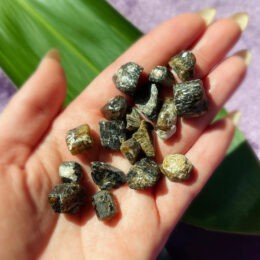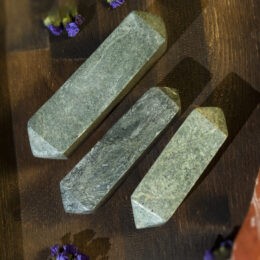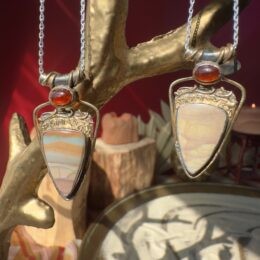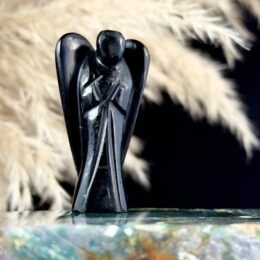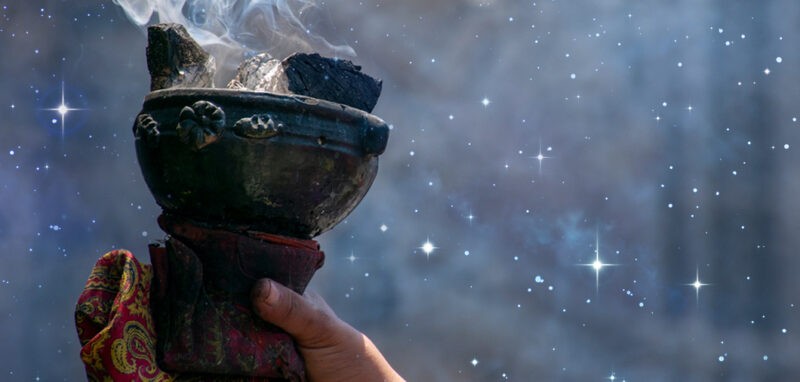Pearl Guide: Properties and Meaning

Pearl Properties
Color: VariousMohs Hardness: 2.5-4.5Chakra: CrownCrystal Structure:OrthorhombicLocation: Australia, France
About Pearl
Pearl is a gemstone associated with the sacral chakra, located in the lower abdomen. It possesses emotional healing and balancing properties, making it a popular choice for individuals struggling with anxiety, depression, or other emotional issues. Pearl also attracts wealth and peace, making it beneficial for those seeking financial improvement or inner tranquility. The color of pearl typically ranges from a soft, iridescent white to cream, symbolizing purity, innocence, and tranquility.
The history of Pearl
Pearl has a rich history dating back thousands of years. It has been highly valued and cherished by various cultures throughout time. In ancient China, pearls were considered symbols of wisdom and possessed magical properties. They were frequently worn by emperors and utilized in medicinal remedies. In ancient Rome, pearls were associated with love and beauty, and were commonly used in jewelry and adornments. In many other cultures, pearls were seen as symbols of wealth, power, and status. Today, pearls continue to be treasured for their beauty and symbolism, making them a timeless and sought-after gemstone.
What are the healing properties of Pearl?
Pearl promotes emotional healing and balance, making it an excellent stone for those who struggle with anxiety, depression, or other emotional issues.
What are the metaphysical/spiritual properties of Pearl?
Pearl is associated with the sacral chakra, which is responsible for our emotions, creativity, and sexuality. It attracts wealth and peace, making it a popular choice for those who are looking to improve their financial situation or find inner peace.
What is the color of Pearl?
The color of Pearl can vary, but it is typically a soft, iridescent white or cream color.
What does the color of Pearl represent?
The gentle hue of Pearl represents purity, innocence, and tranquility.
Pearl FAQ
What is Pearl used for?
Pearls are used for various purposes, including jewelry making, as they are highly valued for their natural beauty and luster. They are often used to create necklaces, earrings, bracelets, and other accessories. Pearls are also used in traditional and cultural ceremonies, as well as in the production of cosmetics and pharmaceuticals.
What does Pearl do?
Pearls are known for their calming and balancing properties. They promote emotional healing and bring a sense of peace and tranquility to the wearer. Pearls also enhance personal integrity and promote loyalty and faithfulness. In addition, they stimulate intuition and enhance spiritual growth.
Can Pearl go in water?
Yes, pearls can go in water. They are formed in the water, inside the shells of certain mollusks. However, prolonged exposure to water and harsh chemicals can damage the surface of pearls and affect their luster. It is recommended to remove pearl jewelry before swimming, bathing, or engaging in activities that may expose them to excessive moisture.
How to cleanse Pearl?
To cleanse pearls, it is best to use a soft, damp cloth or a mild soap solution. Gently wipe the pearls with the cloth or dip them in the soapy water, being careful not to submerge the entire strand. Rinse the pearls with clean water and pat them dry with a soft towel. Avoid using harsh chemicals, ultrasonic cleaners, or steam cleaning methods, as they can damage the pearls.
What does Pearl do spiritually?
Spiritually, pearls have a calming and centering effect on the mind and emotions. They enhance spiritual wisdom and promote purity of thoughts and intentions. Pearls are also associated with feminine energy and help balance and harmonize the yin and yang energies within an individual.
How to clean Pearl?
To clean pearls, it is important to handle them with care. Use a soft, damp cloth or a mild soap solution to gently wipe the pearls. Avoid using abrasive materials or harsh chemicals that can damage the surface of the pearls. After cleaning, rinse the pearls with clean water and pat them dry with a soft towel. Store them in a soft pouch or a jewelry box to protect them from scratches.
How to spot fake Pearl?
To spot fake pearls, there are a few things to look out for. Real pearls have a unique luster and iridescence, while fake pearls may appear too shiny or have a plastic-like appearance. Gently rub the pearls against your teeth – real pearls will feel slightly gritty, while fake pearls will feel smooth. Additionally, inspect the drill holes of the pearls – real pearls will have clean, sharp holes, while fake pearls may have rough or uneven holes.
Is Pearl toxic?
No, pearls are not toxic. They are organic gemstones formed naturally inside the shells of certain mollusks. However, some pearl jewelry may contain metal components or adhesives that could potentially be toxic if ingested. It is always recommended to purchase pearl jewelry from reputable sources and to keep them out of reach of small children or pets.
Where is Pearl found?
Pearls are found in various parts of the world, including the Persian Gulf, the coasts of Australia, China, Japan, and the Philippines. They are also cultured and farmed in many countries, where mollusks are intentionally seeded with irritants to stimulate the formation of pearls. Freshwater pearls are primarily found in rivers and lakes, while saltwater pearls are found in oceans and seas.
How is Pearl pronounced?
Pearl is pronounced as “purl.” The “r” is pronounced softly, and the emphasis is placed on the first syllable. It is a one-syllable word with a short vowel sound.
What chakra is associated with Pearl?
Pearls are associated with the Crown Chakra, which is located at the top of the head. The Crown Chakra is associated with spiritual connection, enlightenment, and higher consciousness. Pearls help open and activate this chakra, facilitating a deeper connection to one’s higher self and the divine.
Can Pearl be in the sun?
While pearls can be exposed to sunlight, it is generally recommended to avoid prolonged exposure to direct sunlight. Sunlight can cause pearls to fade or lose their luster over time. It is best to store pearl jewelry in a cool, dry place and to protect them from excessive heat and sunlight when not being worn.
How to charge Pearl?
Pearls do not require charging like some other gemstones. However, if you feel the need to cleanse and recharge the energy of your pearls, you can place them in a bowl of natural sea salt or bury them in the earth for a few hours. This can help remove any negative energies and restore the natural energy of the pearls.
What is the hardness of Pearl?
The hardness of pearls ranges from 2.5 to 4.5 on the Mohs scale of mineral hardness. This makes pearls relatively soft compared to other gemstones. It is important to handle pearls with care to avoid scratching or damaging their surface.





